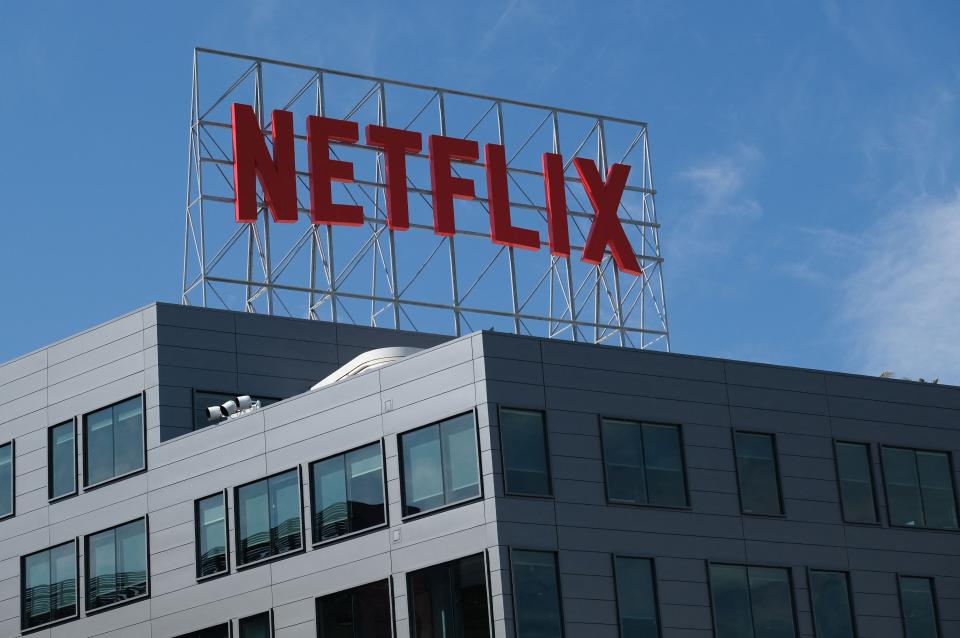Netflix lost a million more subscribers, plans cheaper version with ads: What that means for you
It turns out that not everyone is watching Netflix.
The world's largest streamer lost 970,000 subscribers in the three months ending June 30, the company announced Tuesday in its second-quarter earnings report, ahead of its dire prediction in April of losing 2 million.
It's been a bad few months, businesswise, for the streaming service, which has upended the TV and film industries since it began debuting original programming almost 10 years ago. After its stock price plunged 71% since November, the past year, the company is testing charges for password sharing in Latin America and plans a cheaper version of the service with ads – a major reversal. Employee layoffs have made the news even as competitors from HBO Max to Disney+ and Hulu have made gains.
So what is happening at Netflix? And more importantly, will it change what you get to watch when you chill on a Saturday night?
We spoke to experts in the entertainment industry about what's going on at Netflix, and what might happen next. It might be as wild a ride as any Netflix original series.

What happened at Netflix?
In an April earnings call, the streamer announced that it had lost 200,000 subscribers, marking its first decline since 2011. It then predicted a loss of 2 million subscribers in the three months ending June 30. The news and the prediction panicked Wall Street and reverberated through Hollywood, damaging the company's reputation and prompting layoffs. And changing priorities might alter what shows and movies get made, how long they last, and if subscribers can afford Netflix without the interruption of commercials.
Production of new TV shows and movies takes some time, so "any moves Netflix makes today won't be felt for another two years, or possibly more when it comes to the consumer," says Tom Nunan, a former network and studio president who now teaches at the University of California, Los Angeles.
The second-quarter subscriber loss beat the company's own expectations – and Netflix is forecasting a gain in the next three months – so all may not look so terrible for the streamer, for now. Analysts say the release of "Stranger Things" Season 4 in two parts, which Netflix claims is its most-streamed English language series, may have helped stem more pronounced losses this quarter.
So why did Netflix lose subscribers?
The subscriber loss "seems to be due to increased competition from other streaming services, adverse global economic circumstances, and the fact that the company already has a very high level of subscribers," says Ferran G. Vilaró, CEO of streaming video analytics company NPAW. Netflix has 220.6 million subscribers worldwide, dwarfing the 74 million total for HBO Max and 87.6 million for Disney+, which are available in fewer countries.
At some point. there may be a ceiling on how many people want to subscribe to a streaming service.
"The scale of such ambition is impressive, but it turns out it's unsustainable," says Nunan, who cites the easing of pandemic restrictions as one of the reasons some might ditch the ’flix. Consumers are "looking closely at their streaming bills and asking, 'Do I really need all of this content, and more importantly, can I afford it?'"
When will Netflix get ads? What will they look like?
A lower-priced, ad-supported tier of Netflix subscriptions is on the way, due in early 2023, Netflix said Tuesday. The service didn't really explain what those ads would look like, and in what markets they'd appear first. "Like most of our new initiatives, our intention is to roll it out, listen and learn, and iterate quickly to improve the offering. So, our advertising business in a few years will likely look quite different than what it looks like on day one."
There are similar plans already available from HBO Max, Hulu and Peacock (which also offers a free ad-supported tier), and soon Disney+ will join their ranks. It's just a matter of how long it takes Netflix, which last week agreed to partner with Microsoft for help, to get it up and running.
The price has not yet been announced (the most basic current ad-free monthly subscription costs $9.99, but the standard tier is $16.49) and it's not clear how the ads will fit into the programming. Will they be jammed into the middle of episodes never designed with a natural break for them, like those for network series are? "The elegance (of TV commercials) comes when they think about how many ads to place, where to place them and at what pace," Nunan says.
Netflix's ads could also be very specifically tailored for its subscribers.
"The industry is increasingly moving toward highly targeted and personalized ads that are able to maximize the value for advertisers," says Vilaró. "Netflix certainly has the data capabilities needed to implement these types of ads, but that doesn’t mean it would necessarily do so."

Will Netflix make fewer shows and movies?
The sheer churn of new content on the streamer will probably slow down, experts say.
"Netflix has taken an expensive and extremely high-risk approach to streaming which seems to be: Let's outspend everyone and be all things to all streaming consumers. The scale of such ambition is impressive, but it turns out it's unsustainable. They are learning to become more strategic," Nunan says.
There's a new mandate for "Bigger, better, fewer" movies at Netflix, the Hollywood Reporter says, suggesting the streamer will seek more tentpole, A-list fare like "Red Notice," and fewer "vanity projects" such as Martin Scorsese's "The Irishman." Netflix's latest high-profile film, "The Gray Man" (in theaters, streaming on Netflix on Friday) starring Ryan Gosling and Chris Evans, is an example of one of these bigger films, reportedly costing $200 million.
"Netflix at this point is caught between a clear push to become more populist and broad-ranging and the fact that what's drawing people to other streamers is their strong connection to franchises," says Myles McNutt, an associate professor of communications at Old Dominion University.
Already, production budgets for upcoming Netflix series are being squeezed, according to a studio executive, except for the biggest titles like "Stranger," which cost more than $25 million an episode for its newest season, the Wall Street Journal reported.
Will Netflix still save shows like 'Manifest'? Will my favorite show last longer than three seasons?
The business of "saving" shows canceled elsewhere, as Netflix did for NBC's "Manifest" and Fox's "Lucifer," among others, seems to have moved to the free streamers: Roku nabbed a follow-up film to NBC's canceled "Zoey's Extraordinary Playlist" in 2021, and Amazon's Freevee picked up Season 2 of Showtime's "American Rust," starring Jeff Daniels. Those streamers are jockeying for a place at the table, and name-brand series are helping them get there.
"Netflix picked up 'Manifest' because it has data that proves the show has enough avid audience members to make the renewal a good business investment," says Nunan. These renewals on new networks or streamers are "always because the new 'show parent' believes in the property and has data to back up their beliefs. It's always a business decision, never an emotional 'saving' decision."
Netflix has earned itself a reputation for canceling series after just two or three seasons, a result of a business model focused on luring new subscribers with new content.
"Longer-running shows tend to cultivate a loyal, more invested audience and build deeper relationships between the platform and its subscribers. But they can also be more expensive," says Vilaró, referring to the increase in salaries for actors and creatives as a series ages. Series that aren't major tentpoles like "Bridgerton" or "Stranger Things" will last for multiple seasons only if they continue winning or retaining subscribers.

What else might change at Netflix?
It's a tough time in the economy, and Hollywood isn't immune. Netflix might make big changes as the ripple effects continue to be felt. Streaming TV is starting to look more like basic cable, as bundles emerge (Disney+, Hulu and ESPN+), ads become more prevalent and shows are increasingly released weekly instead of all at once.
"The most important lesson of our current moment is that Netflix's disruption was temporary: one by one, its qualities that shaped every streaming service after them – binge releases, no advertisements – are being undone," McNutt says. "The future of television will, despite what might have seemed true five years ago, look closer to television's past than we might have imagined."
Contributing: Brett Molina, Gary Levin
This article originally appeared on USA TODAY: Netflix lost subscribers, but why? And what does it mean for you?
